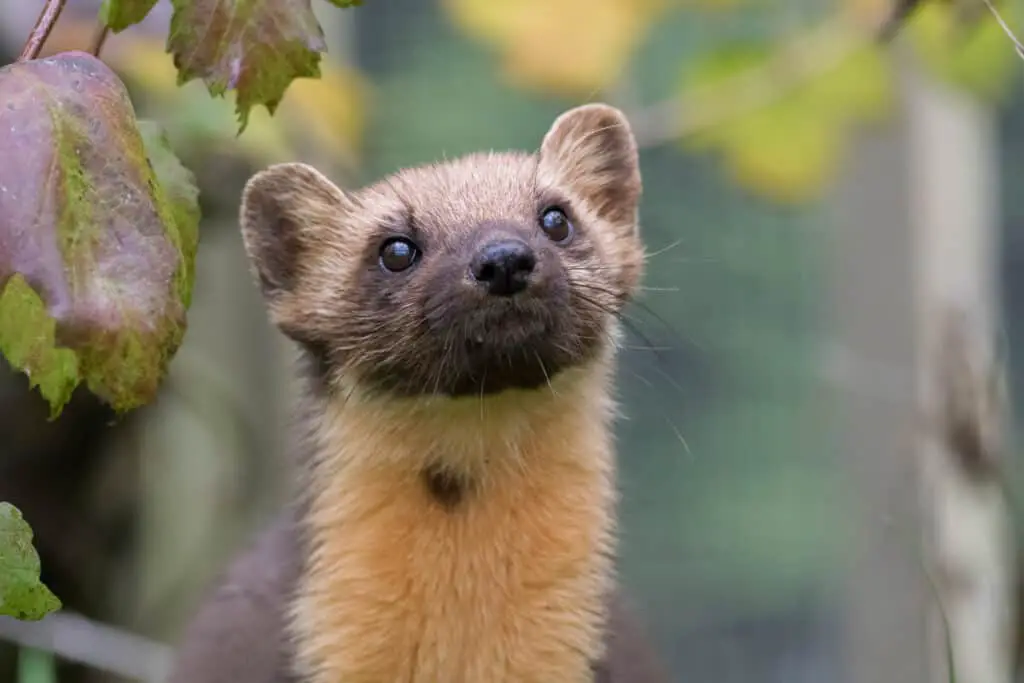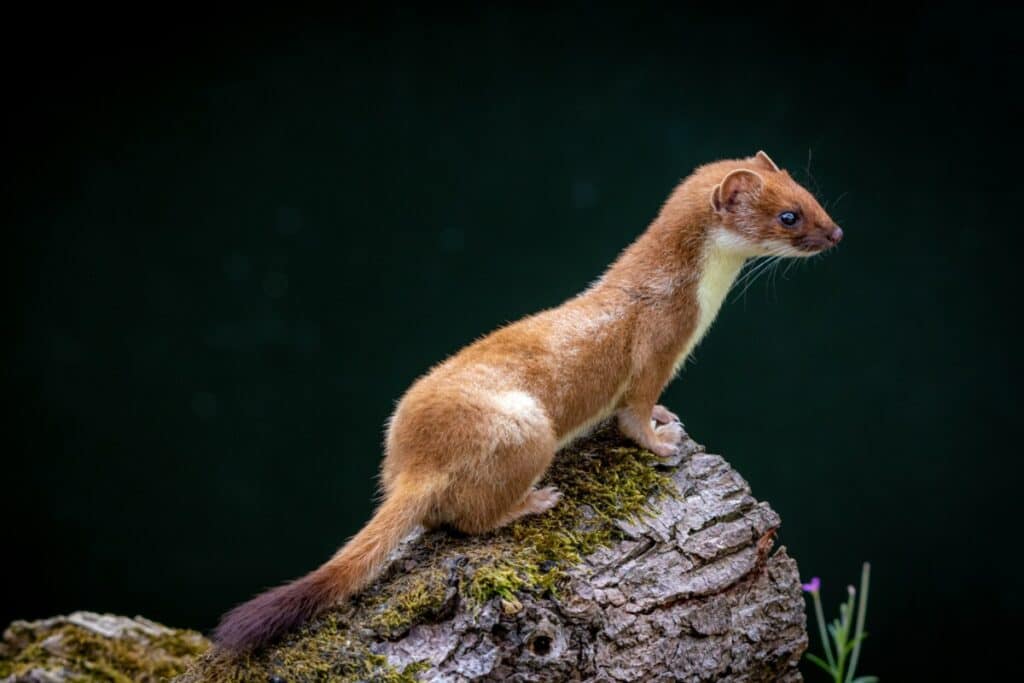Weasels are a species of mammal belonging to the Mustelidae family, which includes animals such as mink, ferrets, and skunks. Due to their small size and solitary nature, weasel behavior has been difficult to observe in the wild with any degree of accuracy.
This article seeks to explore known behaviors exhibited by weasels in order to gain an understanding of how they interact with their environment. The majority of available research on weasel behavior is focused primarily on two subspecies; the common or European weasel (Mustela nivalis) and the long-tailed weasel (Mustela frenata).
Both species display similar traits when it comes to habitat selection, diet preferences, social interactions, and reproductive strategies. By examining these aspects more closely it will become possible to better understand how this elusive animal interacts within its natural environment.

Habitat Selection
The study of weasel behavior and ecology has long been an area of interest for wildlife biologists. The habitat selection behaviors of these carnivorous mammals have recently come to the forefront, with research suggesting that weasels display distinct territoriality when selecting nesting sites.
These observations indicate that the majority of weasels remain in a single home range year-round, rarely venturing outside their defended territory unless food is scarce or other resources are available elsewhere.
Weasel nesting habits also appear to be affected by proximity to humans, as they tend to select wooded areas near human settlements where there is plenty of cover from predators and easy access to small rodents and other prey animals.
This suggests that environmental disturbances such as deforestation can shape the size and distribution of populations, ultimately influencing ecological dynamics on local and regional scales.
In addition, increased interaction between humans and weasels may lead to changes in how these species behave – both short-term responses during encounters as well as longer-term effects due to habituation.
Weasel Lifecycle Unveiled: From Birth to Adulthood
Diet Preferences
The research on weasel behavior has identified that their habitat selection is heavily influenced by the availability of prey and food sources. With this in mind, studies have looked further into the diet preferences demonstrated by these animals.
Weasels are omnivorous mammals that consume a mixture of both plants and other animals to sustain themselves. Their foraging habits often take them far from their original home ranges as they hunt for varying amounts of food depending on seasonality or migration patterns. They typically rely heavily upon small rodents as part of their diets, but also expand to birds, eggs, and even insects when needed. In addition, they can supplement with fruits, mushrooms, nuts, honey and carrion if available in times of scarcity.
Small Rodents:
Birds & Eggs:
- Sparrows
- Warblers
- Finches
Insects:
- Caterpillars
- Beetles
- Grasshoppers
Weasels must compensate for a lack of abundance in certain types of prey items by diversifying their dietary choices during different parts of the year. This adaptation allows them to exploit many opportunities throughout various environments within their range while providing ample resources for survival over longer periods of time which helps to maintain healthy populations overall.
Weasel’s Predators Revealed: Unmasking Their Natural Adversaries
Social Interactions
Weasels are social animals and interact with each other in a variety of ways.
One common form of interaction is mating rituals, which includes courtship displays between male and female weasels to attract mates. These rituals involve physical contact such as nuzzling, chasing and wrestling.
Territoriality is also an important factor in interactions among weasels.
They live in small family groups and will aggressively defend their territory against intruders by growling, snapping or even attacking them if necessary.
Weasels have large home ranges that they actively patrol to mark out their boundaries using scent glands located on the chin, chest, abdomen and tail.
This enables them to recognize members of their own species when they encounter them near their den sites.
As such, territoriality plays an essential role in maintaining order within these small family units.
Reproductive Strategies
Weasels are known to exhibit distinct reproductive strategies, with mating rituals varying by species. Mating typically occurs in the spring and summer months, but can occur year-round depending on geography and climate.
Male weasels will fight one another for access to female mates, although some species may display courtship behavior such as singing or scent marking prior to mating.
Parental care is generally limited in weasels; males rarely provide any parental care beyond copulation, often leaving soon after the act has been completed.
Females build nests where they give birth to litters of two to twelve young, which she nurses until they are ready to leave her nest at four weeks old.
After this time period, females provide no further parenting duties and their offspring must fend for themselves.
Weasel populations tend to be cyclical due to their short life spans and lack of parental protection from predation.

Adaptability To Changing Environments
Weasels are renowned for their adroit adaptability to changing environments, displaying a myriad of instinctual responses and migration patterns. By nature they are curious creatures that possess an innate ability to sense danger and survive in any habitat or climate, often mastering the skills necessary to thrive.
The capricious canines are capable of acclimating quickly through swift physical movements, utilizing a wealth of resources such as food, shelter and water with dexterous efficiency. In cold temperatures weasels have been known to burrow into snow banks to keep warm while also finding sanctuary from lurking predators. They are also apt at making nests out of grasses and other available materials when seeking refuge from inclement weather conditions. Furthermore, their agile frames allow them to easily navigate cramped crevices and tight spaces where larger animals cannot fit.
Their impressive capacity for adaptation is further demonstrated by how well they adjust to human-populated areas: weasels become quite comfortable living near humans if given ample sources of sustenance like garbage bins and pet dishes left outside. Additionally, some species may even migrate long distances depending on the season changes which helps them find more favorable climates for successfully reproducing young.
All these traits combined make them resilient survivors no matter what environment they encounter.
Conclusion
Wildlife biologists recognize that weasels are highly adaptable animals, which is evident in their habitat selection, diet preferences, social interactions and reproductive strategies.
For instance, the European polecat has been observed to inhabit a wide variety of habitats including fields, meadows, grasslands, forests and wetlands. Additionally, it possesses a diverse diet consisting of small mammals such as voles or mice; amphibians like frogs; insects such as beetles or crickets; and reptiles like lizards.
Additionally, weasel populations have demonstrated an impressive ability to survive in varying environmental conditions. This suggests they have developed flexible behaviors that enable them to effectively respond to changing circumstances and exploit available resources more efficiently.
A case study conducted on the common stoat showed that its population density was higher during periods with colder weather due to increased availability of prey species living under snow cover.
Overall, the behavior of weasels is indicative of their remarkable capacity for adaptation within different environments. Their specialized hunting techniques combined with their varied diets make these small creatures well-suited for surviving in many ecosystems across the globe.
